Subjects:
- Introduction parking heater
- Parking heater operation
- Cooling system parking heater
- Activating the parking heater
- Electric auxiliary heater
Introduction parking heater:
Passenger and commercial vehicles can be equipped with a parking heater or electric auxiliary heater. Especially in countries with long periods of low temperatures, such as in Scandinavia, auxiliary heating is very common. In the Netherlands we mainly see the parking heater in exclusive passenger cars.
The parking heater is connected to the fuel system and can operate with the engine switched off. It is often activated before starting the engine from cold. The advantages of using the parking heater are:
- The interior is at a higher temperature when boarding. Not only does this provide more comfort, ice from the windows will also have melted;
- The engine cooling system is pre-heated, which gives a better cold start. The engine reaches its operating temperature sooner. Not only does this benefit the lifespan (reduced wear), but less harmful exhaust gases will also be emitted compared to a vehicle without this preheating.
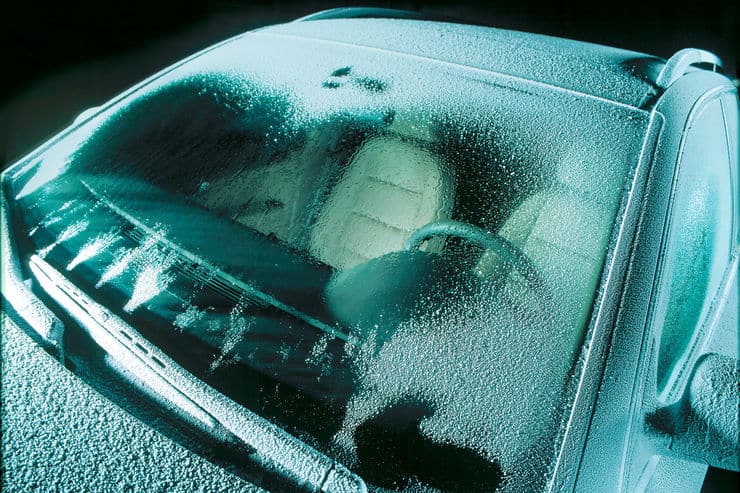
A parking heater can switch on automatically at a cold start at a low outside air temperature. With a cold start, the parking heater can warm up a diesel engine in just 5 minutes. The parking heater switches off automatically when the operating temperature is reached.
The parking heater is connected to both the fuel and cooling system. The fuel is ignited in the parking heater and heats up the coolant in the adjacent coolant channel.
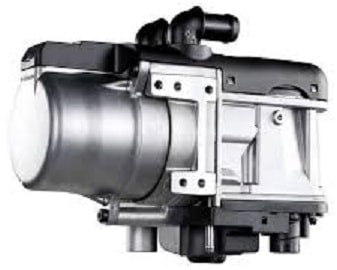
We can encounter the parking heater in different places in and around the car:
- In the engine compartment: the parking heater can be located behind the front bumper or in a wheel arch;
- Under the car: the parking heater is often mounted under the car. The bottom plates protect it against dirt.
The following image shows the installation location of a Volkswagen Transporter (T5).
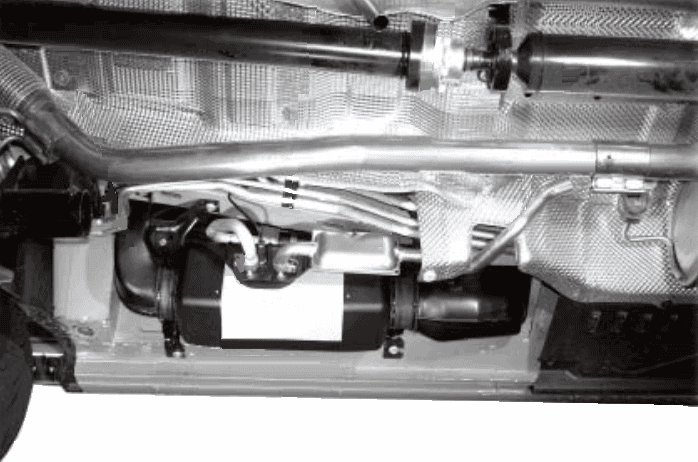
Operation parking heater:
The fuel pump supplies the parking heater with fuel. The fuel enters a so-called combustion chamber via the fuel supply (number 10 in the picture below). In this combustion house, the fan (1) blows air from the inlet duct (11) through the metal fleece to the combustion chamber and is brought into contact with the supplied fuel. Due to the heating of the glow plug (14), fuel evaporates in this metal fleece. The fuel ignites in the combustion chamber. The moment the phototransistor in the flame guard measures a stable flame in the glow tube, it reports this to the control unit (12), which immediately switches off the glow plug to prevent overheating. The combustion exhaust gases leave the parking heater via the exhaust (10). The end of the exhaust pipe can end up at the level of the engine compartment or under the passenger compartment.
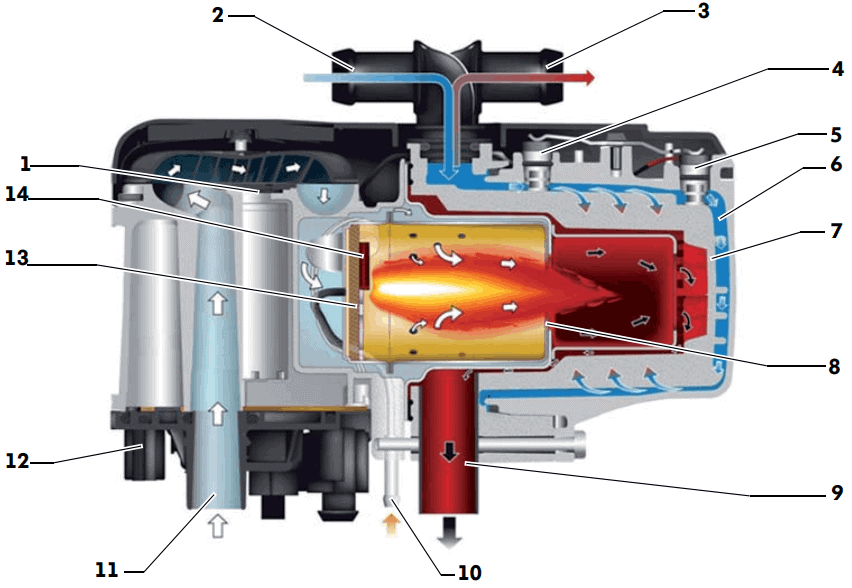
Description:
- fan;
- coolant inlet;
- coolant outlet;
- temperature sensor;
- overheating sensor;
- water canal;
- heat exchanger;
- burners with combustion chamber and flame tube;
- exhaust of the combustion gases;
- fuel supply;
- combustion air inlet;
- control unit;
- metal fleece;
- glow plug with flame monitoring.
Image source: Volkswagen AG.
The coolant supplied via the inlet channel (2) is guided through the water channels (6) along the combustion chamber. This creates a heat exchanger effect. The heated coolant leaves the parking heater through the outlet (3) and flows to the heater radiator in the stove house under the dashboard.
Cooling system parking heater:
The existing cooling system of the car has been expanded with additional pipes and components for the parking heater. We find here, among other things, an electric coolant pump, which transports coolant to the parking heater with the engine switched off. We also see that the coolant line from the parking heater runs directly to the heater radiator: it heats up first. The booster c. interior fan will be activated to blow (cold) interior air through the heated heater radiator into the interior.
The coolant pipe continues after the heater radiator on its way to the combustion engine. In addition to the cooling system in the engine, the oil cooler will also heat up. When the engine is started, the engine oil will be warmed up more quickly by the oil cooler.
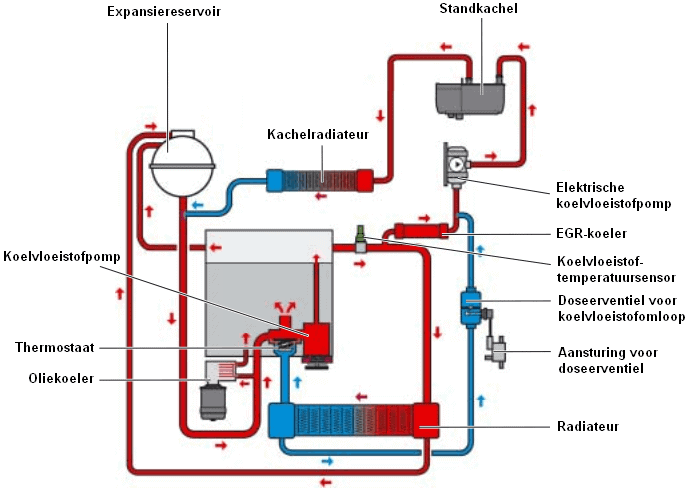
Activating the parking heater:
The parking heater can usually be activated manually with a remote control. Modern systems also offer the possibility to program the activation of the parking heater. The on-board computer can be used to set the switch-on times, so that the car is warm for departure the next morning.
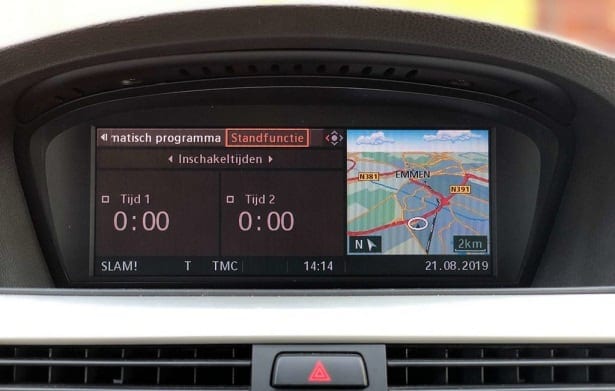
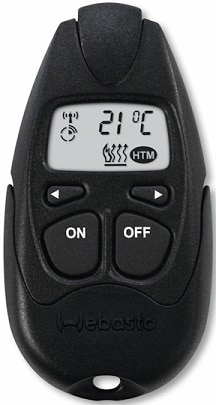
Electric auxiliary heating:
Sometimes the combustion engine is insufficiently able to retain sufficient heat from the cooling system at cold outside air temperatures. With a low engine load, the coolant temperature drops, so that the heater radiator, with the air flowing through it for the heater, also remains too cold. An electric auxiliary heating offers the solution.
As an example, we take the electric auxiliary heating of a Smart ForTwo 450.
The electric auxiliary heater is switched on when the following conditions are met:
- Outside air below 8 degrees Celsius;
- Coolant temperature below 85 degrees Celsius;
- Temperature selector lever in the maximum hot position;
- Blower switched on;
- Combustion engine switched on.
The auxiliary heater consists of four heating elements in a housing (R17) that are controlled by a control device (A15e). As soon as current flows through a resistor, it heats up. The resistors are located in an air shaft of the stove house: the glowing resistor heats up the passing air. The current through the resistors increases to 25 to 50 amps, depending on the temperature. The inrush current is high, but the current with heated up resistors decreases. After all, it takes less energy to keep the resistors warm than to heat them up.
The maximum power is about 900 watts at 14 volts.
The two pictures below show the electric heating element.
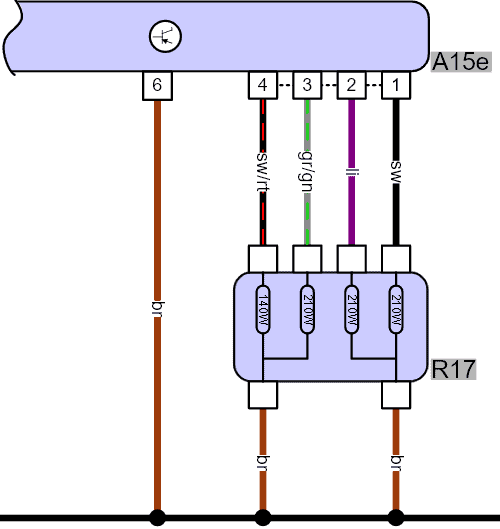
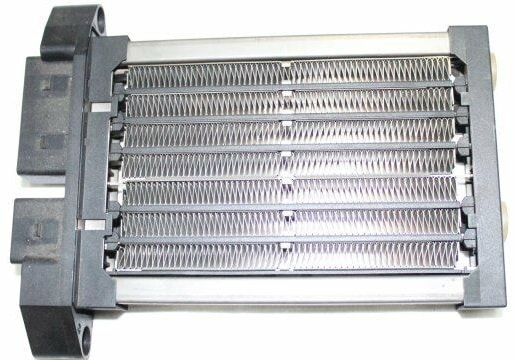
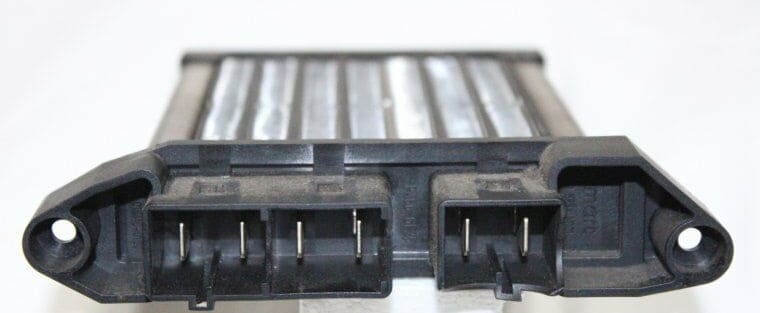
Related page:
